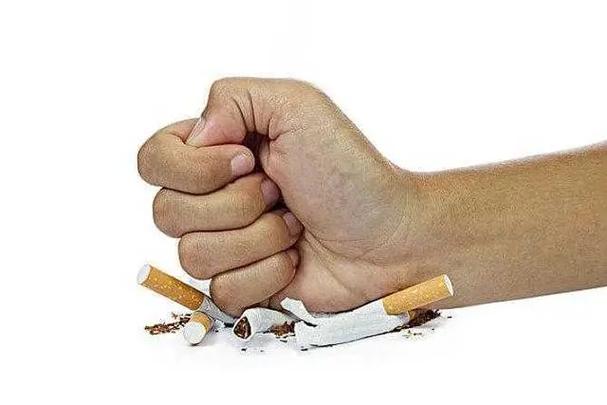Title: Tobacco Use: A Potent Accelerant in the Gingival Recession Epidemic
Gingival recession, the pathological apical migration of the gingival margin leading to exposure of the root surface, is a prevalent dental condition affecting a significant portion of the global population. While its etiology is multifactorial, involving aspects like traumatic tooth brushing, anatomical predispositions, and periodontal disease, a substantial and modifiable risk factor stands out for its profound impact: tobacco use. A growing body of clinical evidence unequivocally demonstrates that tobacco, in its various forms, acts as a powerful accelerant, drastically increasing the progression rate of gingival recession and complicating oral health outcomes.
The Underlying Assault: How Tobacco Compromises Periodontal Health
To understand tobacco's role in accelerating recession, one must first examine its multifaceted attack on the periodontium—the tissues supporting the teeth.
1. Impaired Blood Flow and Vasoconstriction: Nicotine, a primary component of tobacco, is a potent vasoconstrictor. It causes the tiny blood vessels within the gingival tissues to narrow, significantly reducing blood flow, oxygen delivery, and the supply of essential nutrients. This state of ischemia weakens the gum tissue's resilience and drastically impairs its ability to mount an effective inflammatory response to bacterial challenge and to heal from minor traumas. The gums become more vulnerable, less robust, and prone to breakdown.
2. Compromised Immune Response: Tobacco smoke contains thousands of chemicals that disrupt the normal function of key immune cells, particularly neutrophils and fibroblasts. Neutrophils, the body's first line of defense against bacterial biofilm (plaque), are rendered less effective at chemotaxis (moving to the site of infection) and phagocytosis (engulfing bacteria). Simultaneously, the function of fibroblasts—cells responsible for producing collagen, the structural protein that gives gums their strength and form—is suppressed. This one-two punch means a stronger bacterial attack and a weaker structural defense and repair system.
3. Alteration of Microbial Flora: Studies indicate that the subgingival environment in smokers favors the colonization and proliferation of more pathogenic, anaerobic bacteria. Smokers tend to harbor higher levels of periodontopathic bacteria like Porphyromonas gingivalis and Tannerella forsythia. This shift towards a more pathogenic biofilm creates a constant, heightened inflammatory challenge that the already-compromised host defenses are ill-equipped to handle.
4. Masking of Disease Symptoms: The vasoconstrictive effect of nicotine often reduces the classic signs of inflammation: redness, swelling, and bleeding on probing. A smoker's gums may appear deceptively pink and firm, masking the underlying destructive inflammatory process. This can lead to a false sense of security for both the patient and the clinician, delaying diagnosis and intervention until more advanced tissue loss, including significant recession, has already occurred.
From Inflammation to Recession: The Direct Pathways
These underlying mechanisms directly fuel the processes that lead to gum recession.
Accelerated Periodontal Destruction: The combination of a more pathogenic microbiome and a blunted host immune response leads to a more rapid and severe progression of chronic periodontitis. As the inflammatory process destroys the periodontal ligament and alveolar bone that support the tooth, the gums inevitably follow the bone crest, receding apically. In smokers, this process is not just more likely; it occurs at a faster rate and is often more extensive than in non-smokers.
Impaired Healing and Tissue Attachment: Gingival recession can also result from traumatic injuries or occur after periodontal surgical procedures. The vasoconstrictive and cytotoxic effects of tobacco severely impair wound healing. For a smoker, even a minor abrasive injury from tooth brushing is less likely to repair itself effectively. Furthermore, the success of mucogingival surgeries aimed at treating recession—such as gum grafts—is significantly lower in smokers. Graft failure rates are higher due to poor vascularization, leading to less predictable outcomes and a higher likelihood of recurrence.
The Role of Smokeless Tobacco: It is crucial to note that the risk is not exclusive to smoked tobacco. The placement of smokeless tobacco (chewing tobacco, snuff) directly against the gingival mucosa creates a localized havoc. It causes direct chemical irritation, physical abrasion, and dramatically increases the concentration of harmful substances at a specific site, leading to highly localized and often severe gingival recession, leukoplakia, and other oral lesions.
Clinical Implications and a Call to Action
The clinical implications of this accelerated recession are profound. Exposed root surfaces are susceptible to dentinal hypersensitivity, making eating and drinking uncomfortable. They are also more prone to root caries (cavities) as the root cementum is softer than enamel and more easily demineralized. Aesthetically, progressive recession can lead to elongated teeth, black triangles between teeth, and an uneven gum line, causing significant psychosocial distress for patients.

Crucially, the dose-response relationship is clear: the risk and rate of progression correlate with the intensity and duration of tobacco use. However, the silver lining is that this risk factor is modifiable. Cessation is the single most effective intervention to alter the disease course.
Research shows that upon quitting tobacco, the subgingival microbiome begins to shift back towards a less pathogenic composition within weeks. Vascularization improves, and over months to years, the immune response can recover substantially, slowing the rate of periodontal breakdown and recession progression to levels closer to those of non-smokers. For patients undergoing periodontal surgery, abstinence is strongly recommended to ensure optimal healing and graft success.
In conclusion, tobacco use is not a passive bystander but an active aggressor in the pathogenesis of gingival recession. It orchestrates a perfect storm of reduced host defenses, enhanced bacterial virulence, and impaired tissue repair, all of which conspire to dramatically accelerate the loss of gingival tissue. Dental professionals must integrate tobacco cessation counseling as a non-negotiable component of periodontal therapy and patient education. For any patient concerned about receding gums, the message must be unequivocal: stopping tobacco use is the most critical step one can take to protect their smile and halt the progression of this debilitating condition.










